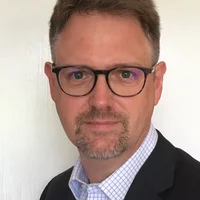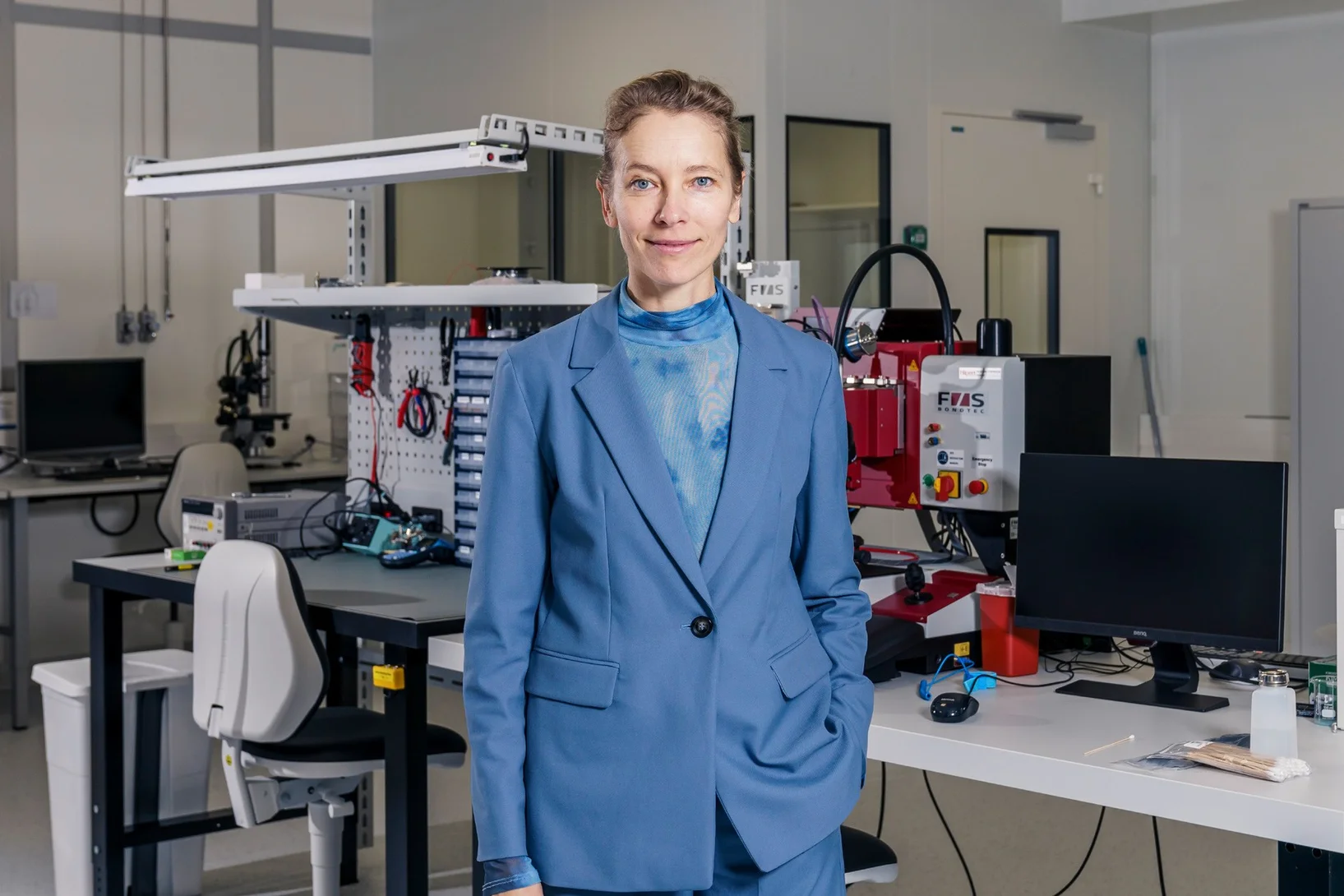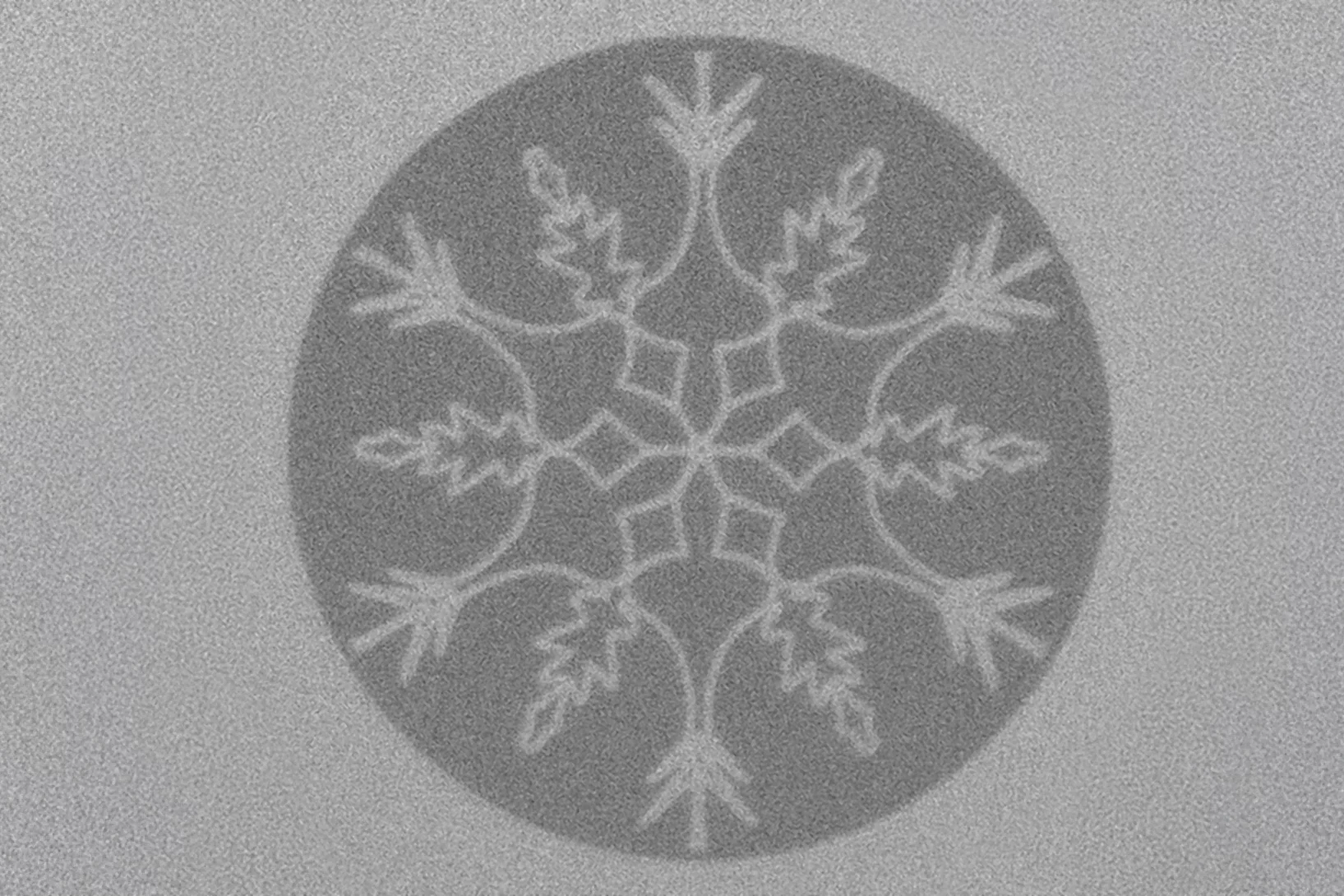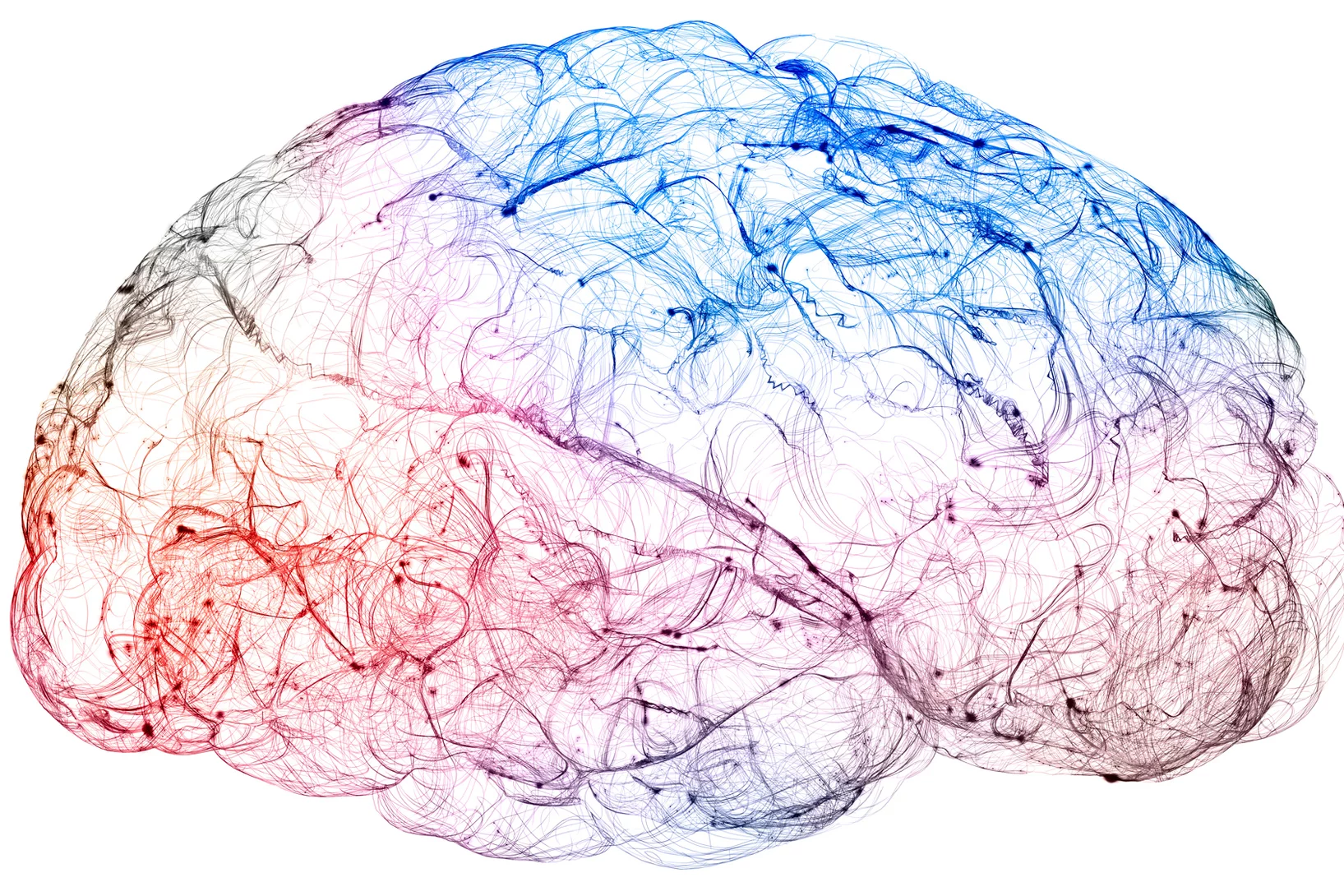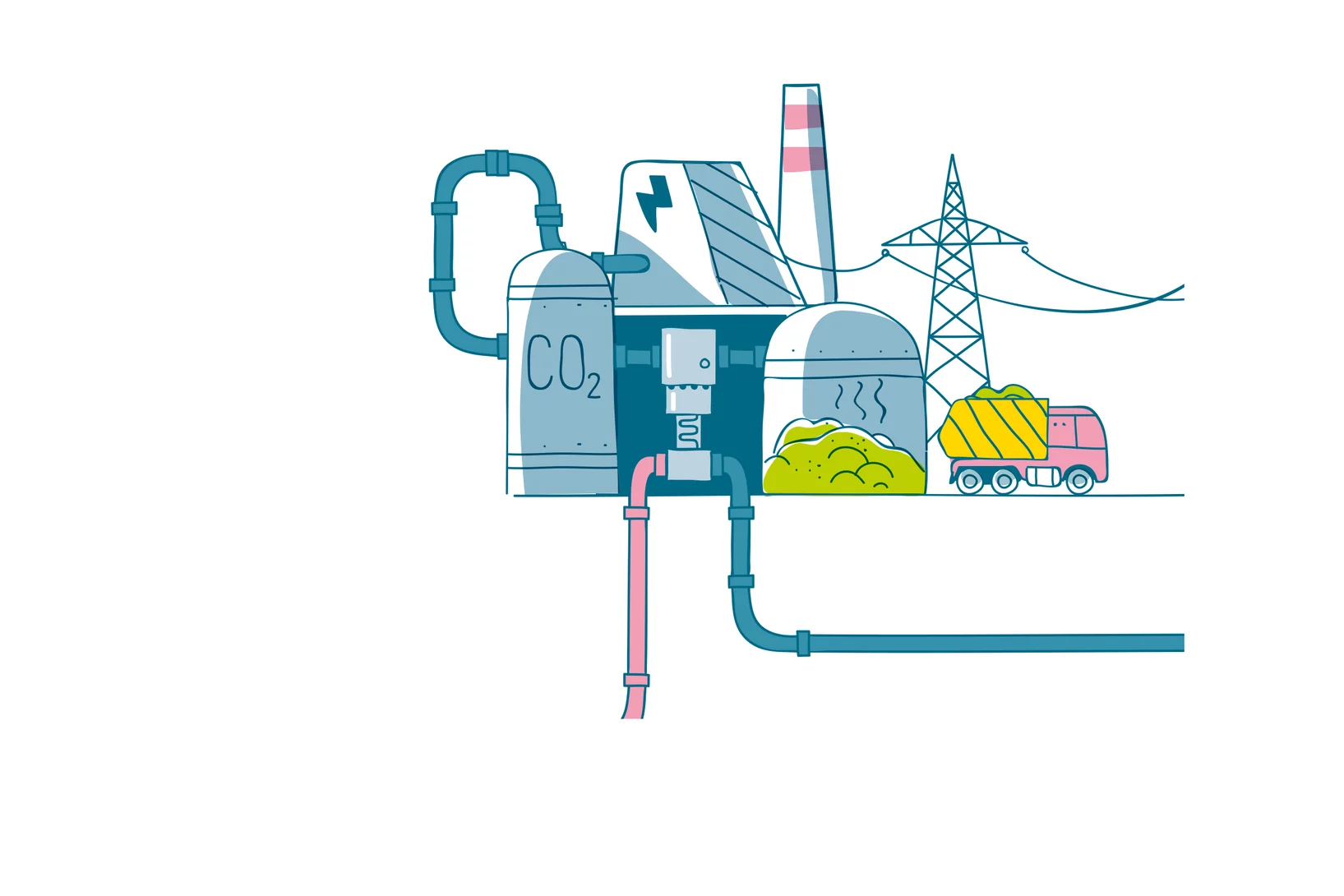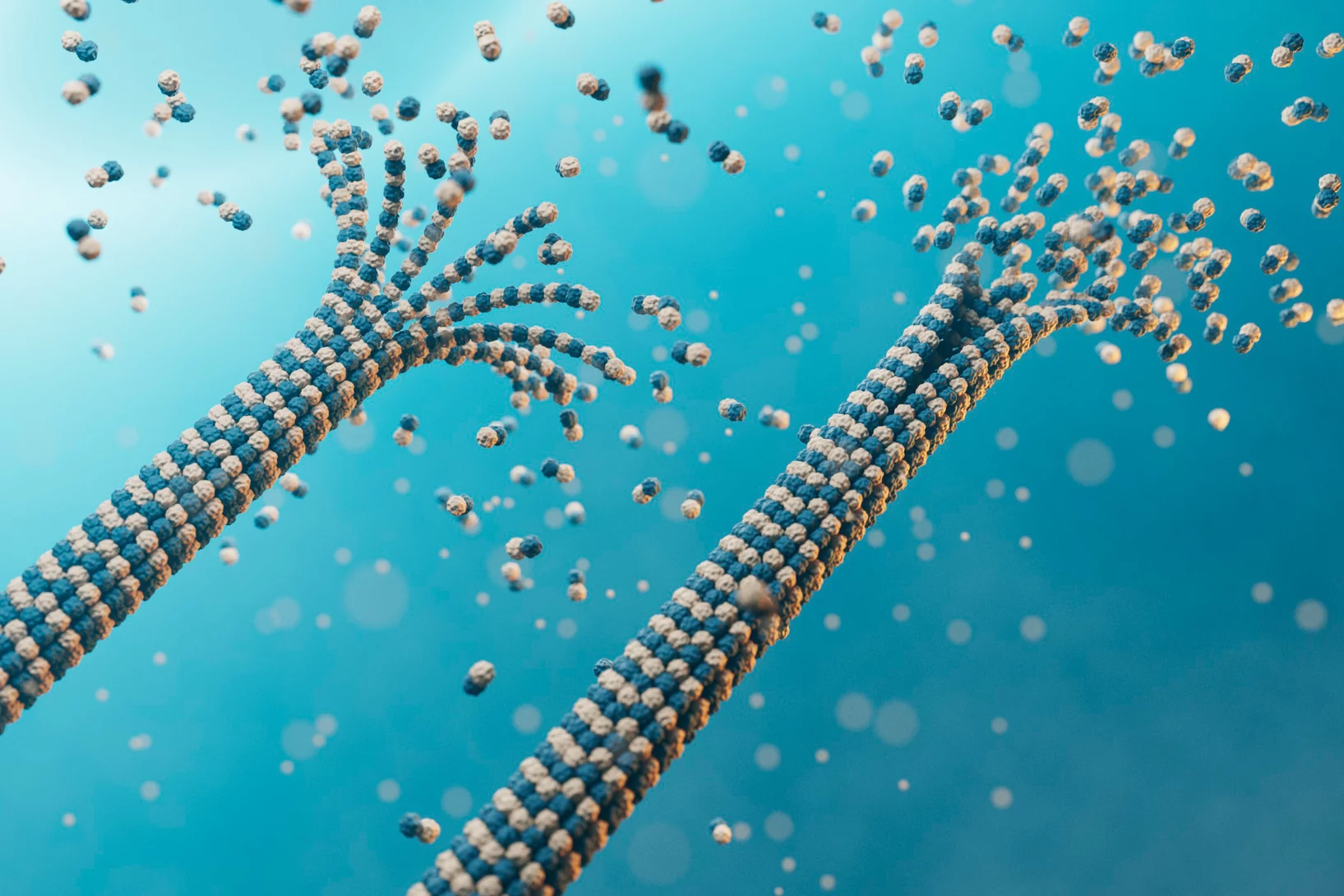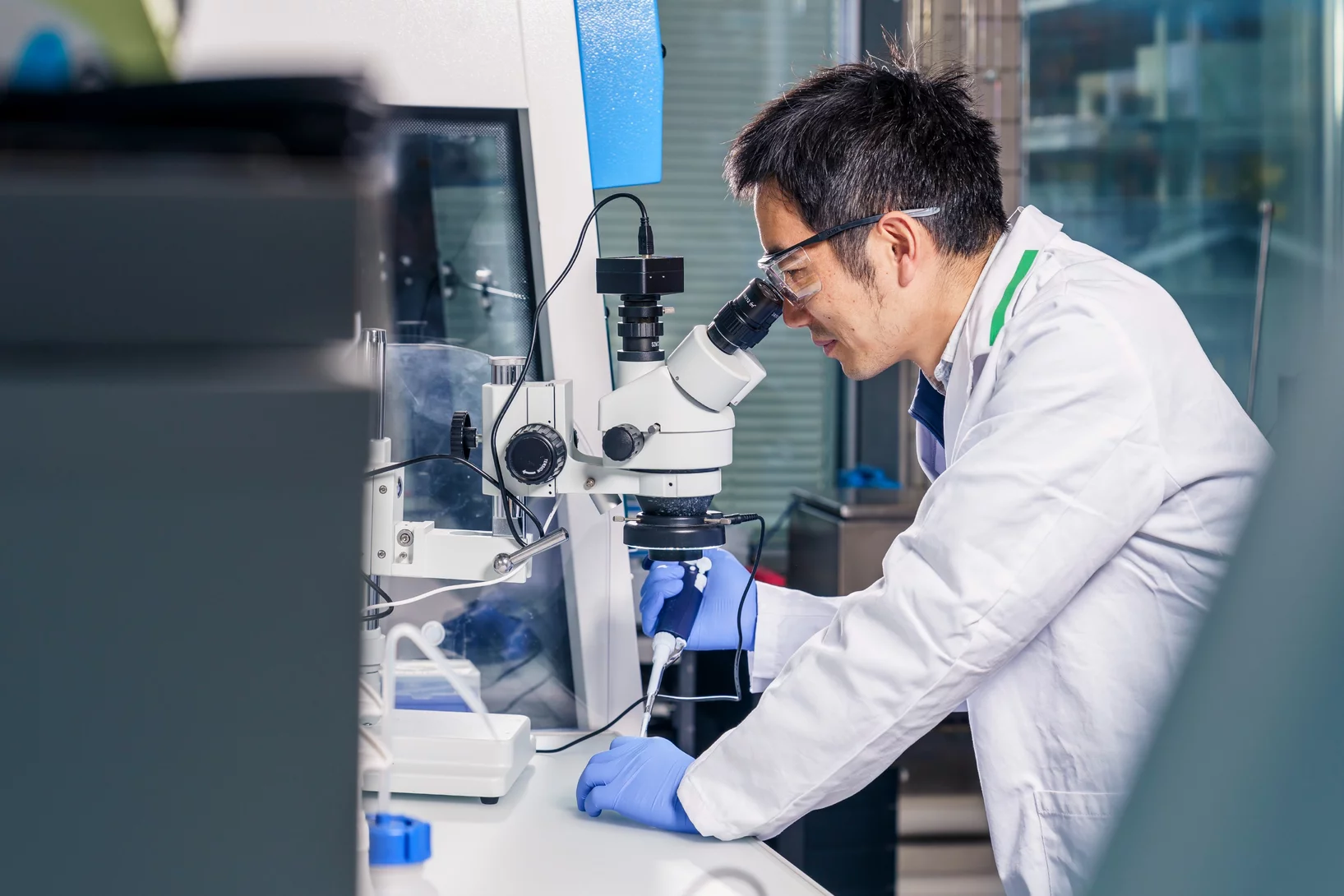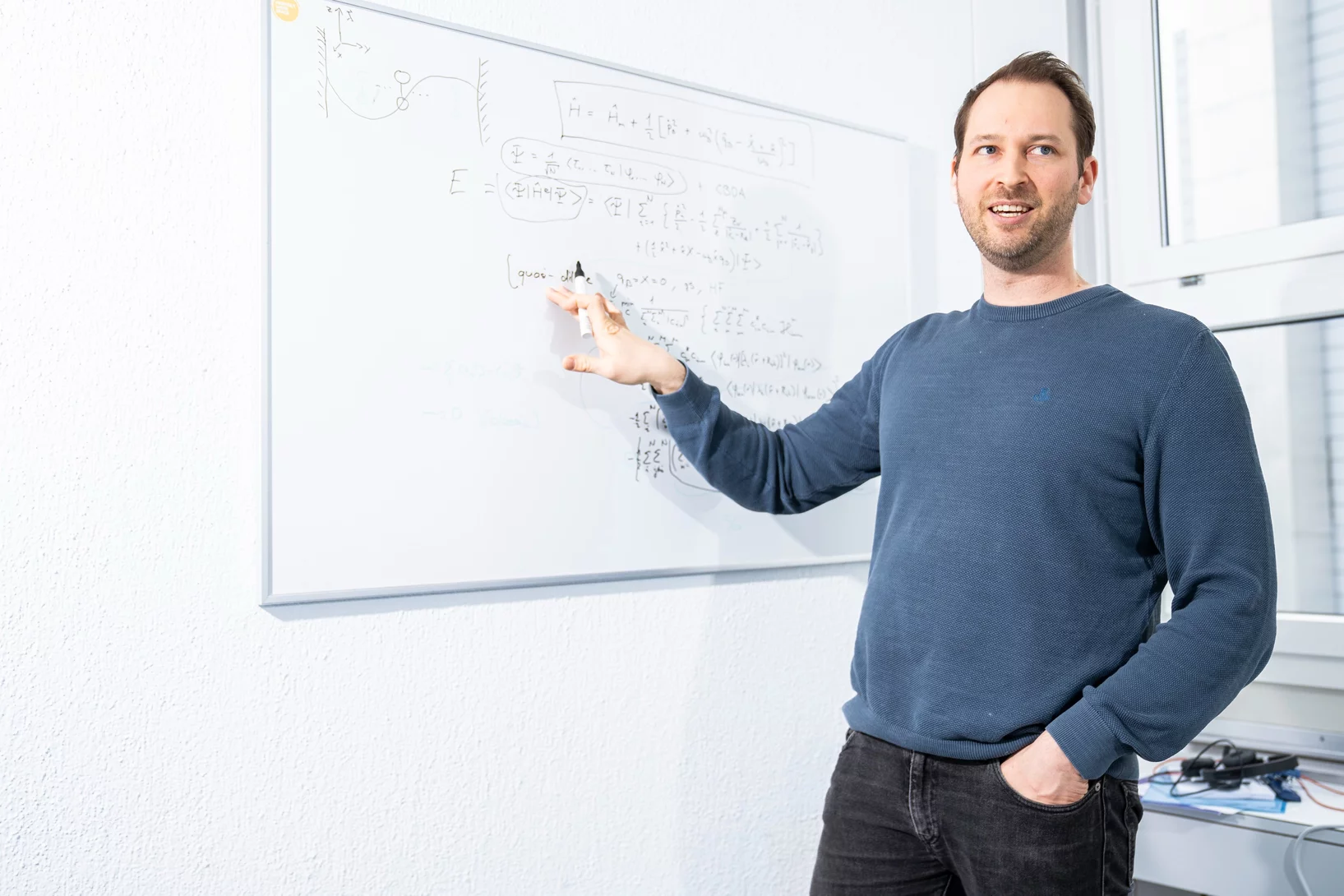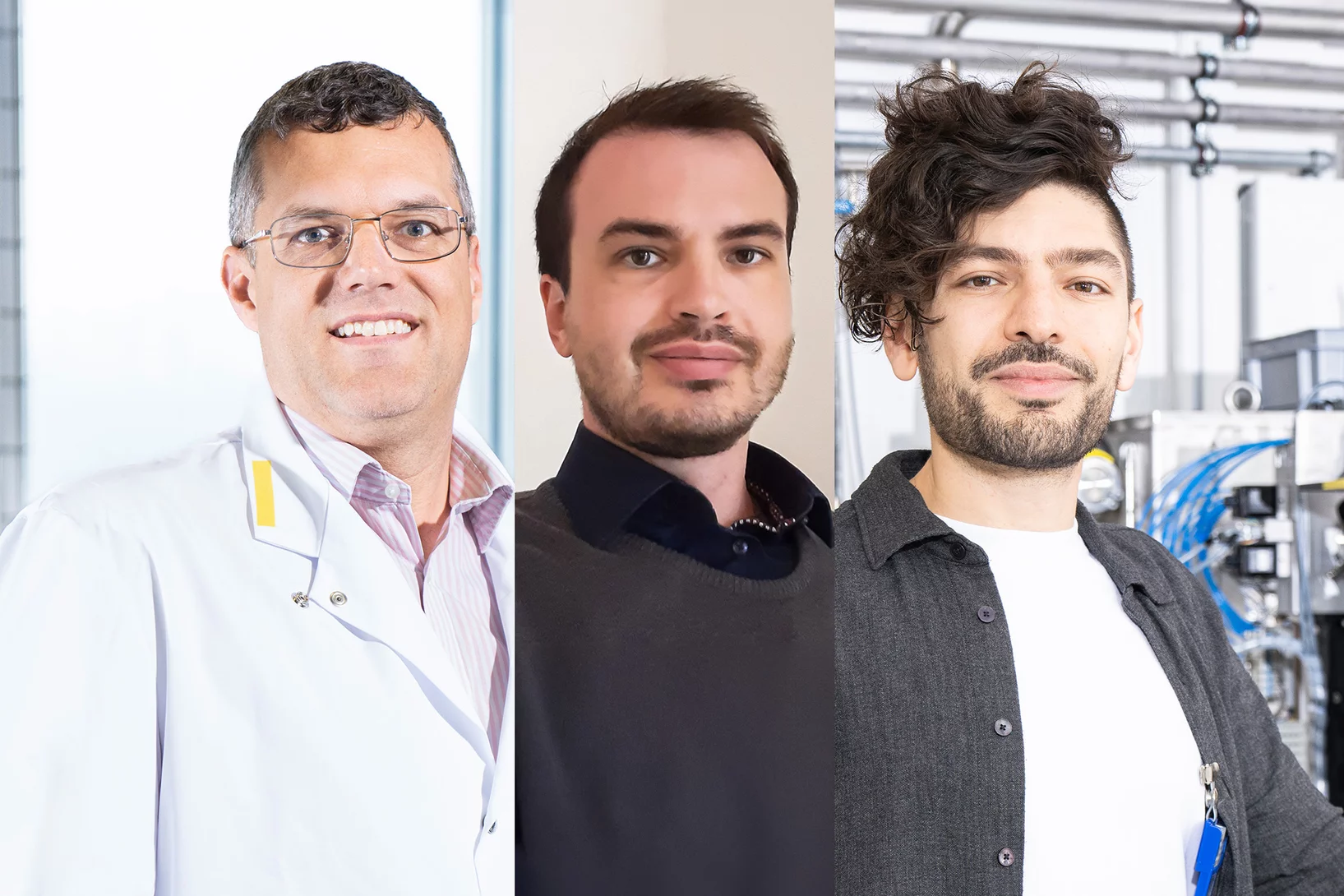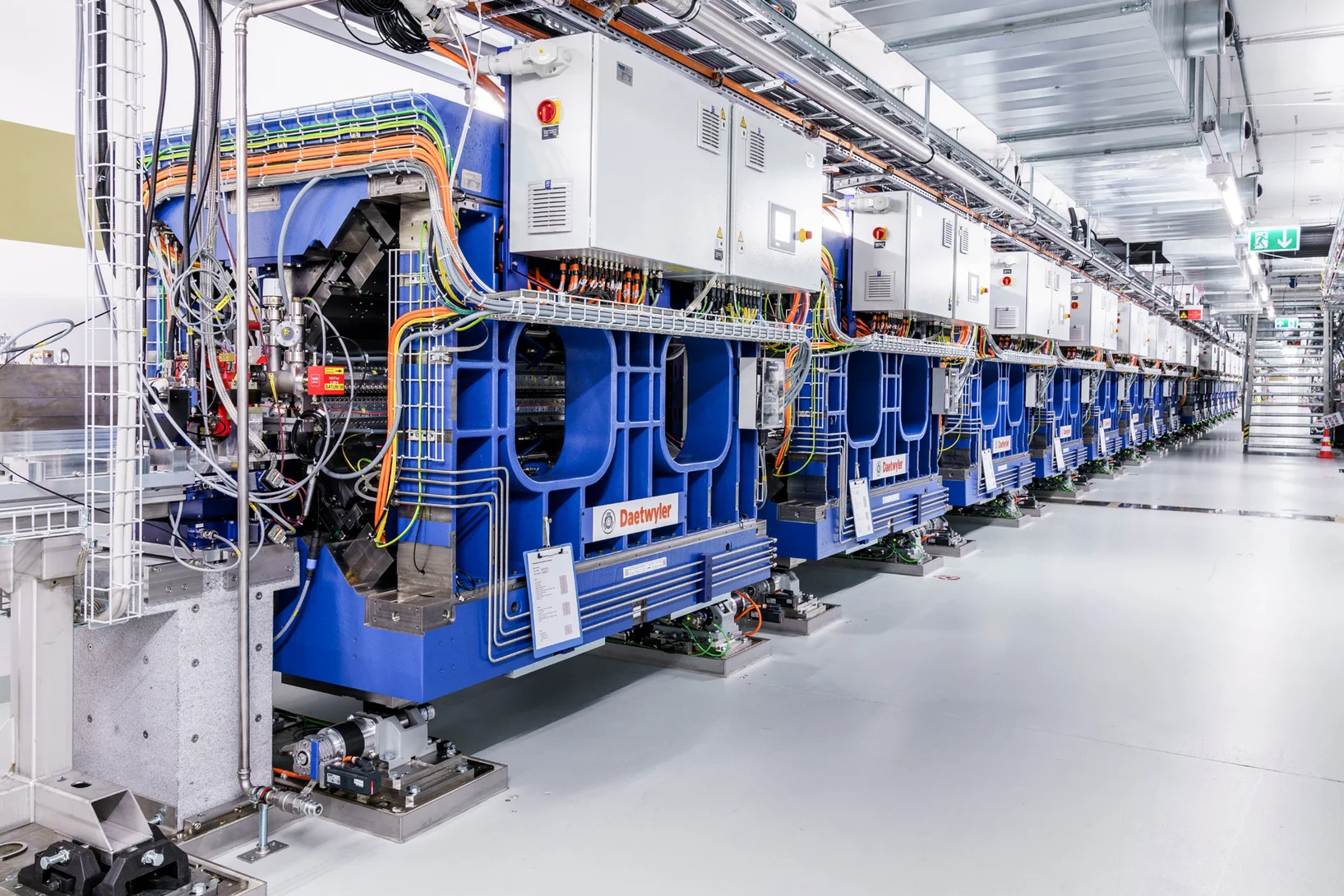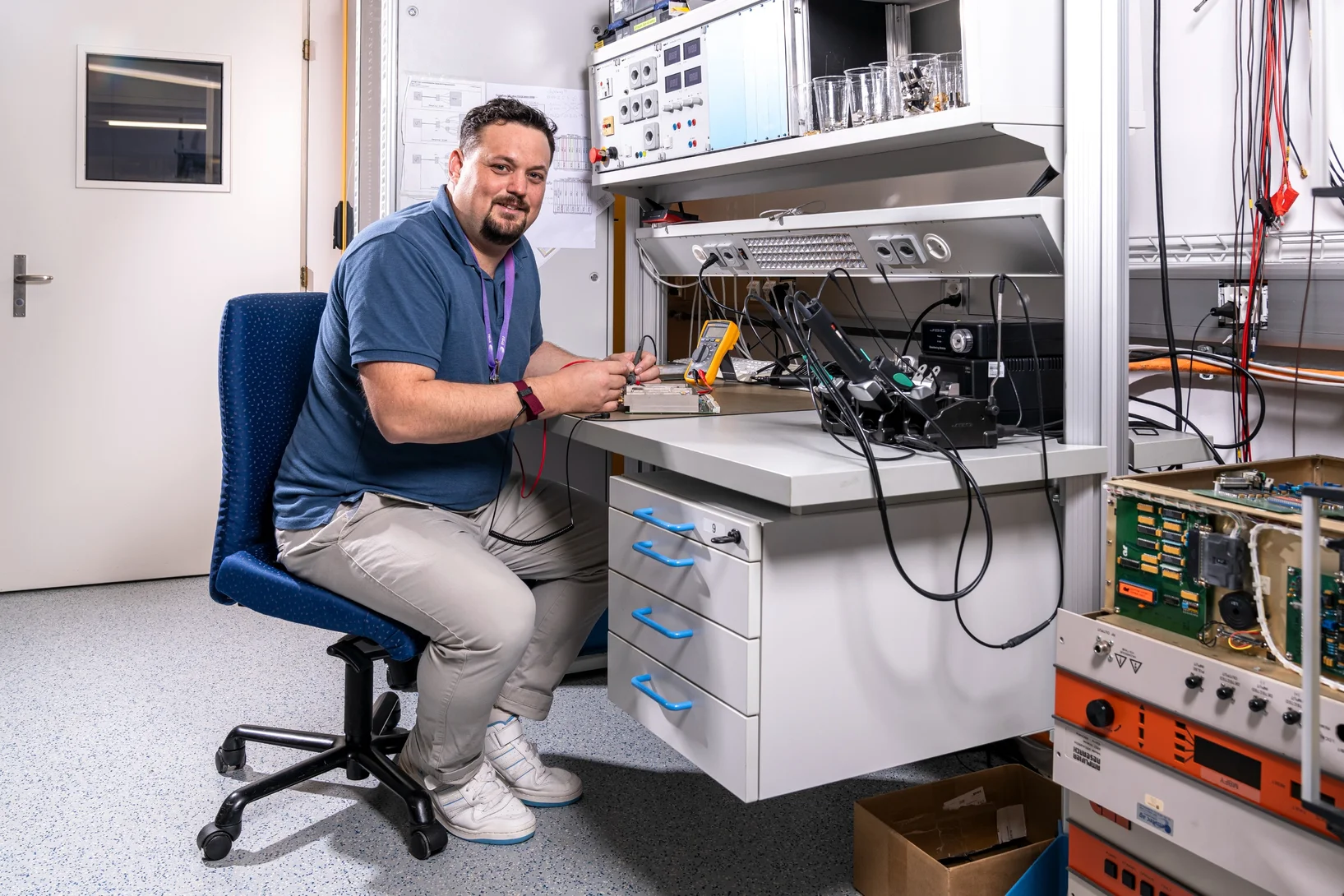Find out more about the research questions we are working on and the unique large-scale research facilities we are using to find answers.
Future technologies
New technologies are the driving force behind an innovative society. At PSI, researchers are laying the necessary foundations for this. They are looking for previously unknown ways of processing and storing data, making technologies more sustainable and efficient or developing new processes to delve ever deeper into the micro and nano worlds. Their findings form the basis for new applications - be it in medicine, information technology, energy generation and storage - or for new production processes in industry.
“Collaboration is particularly important in quantum research”
PSI researcher Kirsten Moselund talks about quantum technologies – about their importance and the current situation in Switzerland. And about her own research in the field of nanophotonics.
Laser draws made-to-order magnetic landscapes
Researchers at PSI have found a surprisingly inexpensive and fast method to make localised alterations in magnetic materials.
X-rays bring high-resolution brain mapping within reach
A new imaging breakthrough could reveal brain connectivity in 3D detail never before accessible.
Energy and Climate
Climate change is one of the greatest challenges of our time. Switzerland aims to be climate-neutral by 2050 – in other words, not to emit more greenhouse gases than can be absorbed naturally or by technical means. This calls on us to rethink our energy production and use – away from fossil fuels and towards climate-neutral energy sources. How can Switzerland become fit for a climate-neutral energy future? Researchers at PSI are looking for answers.
Clean biogas – measurable everywhere
A new analytical method can detect even tiny amounts of critical impurities.
Electric cars and heat pumps can help the Energy Strategy
In future, flexibly operated heat pumps and electric cars could reduce both electricity imports and electricity prices. That is according to a new study by a Swiss research consortium led by ETH Zurich.
Particulate pollution re-evaluated
A new study provides data from 43 sites across Europe, showing the respective oxidative stress on the lungs.
Health Innovation
New methods for diagnosis and therapy are at the centre of medical research and development at PSI. In cancer diagnosis, the focus is on early detection. Basic research using the latest methods leads to the development of innovative therapies. PSI works very closely with universities, clinics and the pharmaceutical industry.
How microtubules take part in cellular signal processing
Researchers at PSI have investigated on the molecular level how the cytoskeleton transmits commands within the cell. Their findings could provide the medical field with new options for intervention in the event of malfunctions within the organism.
Optimising the treatment of eye tumours
The Insel Group and PSI are expanding their collaboration to provide faster and better coordinated access to proton therapy for patients with eye tumours.
How the cheese-pasta principle could help counter Alzheimer's
PSI researchers have discovered cellular mechanisms that could help to mitigate diseases such as Alzheimer's and Parkinson's.
Fundamentals of Nature
At PSI, researchers investigate the basic structures of matter and the fundamental principles of nature. They examine the smallest building blocks of matter or investigate the structure of biological molecules and how they perform their tasks. The knowledge gathered in this way opens up new approaches to finding solutions in science, medicine and technology.
New standards in nuclear physics
With unprecedented precision: PSI researchers measure the nuclear radius of muonic helium-3 and put the theories of atomic physics to the test.
With pad, pencil, and algorithms
Physicist Dominik Sidler is developing fundamental theories for previously inexplicable phenomena.
Prestigious funding for three research projects at PSI
Concrete, chemical catalysis and the search for new physics – three PSI researchers have each received a grant from the Swiss National Science Foundation for these areas of research.
Our large research facilities
PSI develops, builds and operates complex large research facilities. PSI has the world's most powerful muon source, a unique proton and neutron source, an synchrotron of international importance and one of only five X-ray free-electron lasers with hard X-rays in the world. Scientists from all over the world use PSI's large research facilities for their scientific investigations. They are also available to Swiss research and industry for their experiments.
Synchronising ultrashort X-ray pulses
Attosecond coherent pulses at SwissFEL will open new experimental possibilities
Engineering skill and perseverance
Credit for the on-time completion of the major SLS 2.0 upgrade project is due in part to a team of dedicated electrical engineers.
Big heart, acute senses key to explosive radiation of early fishes
X-rays of a 400-million-year-old fossil illuminate a key moment in our deep evolutionary past.
